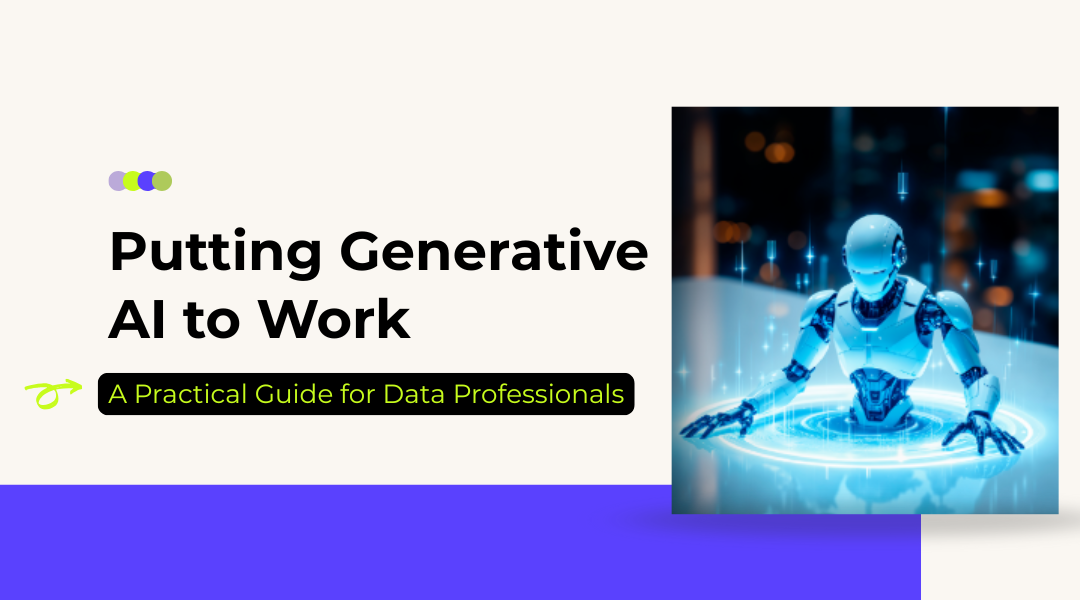We’re witnessing a fundamental shift in how we work with data and technology. Generative AI has moved from a futuristic concept to a practical toolkit, changing the way analysts, developers, and businesses approach problems. This isn’t about replacing human intelligence—it’s about augmenting it. By understanding how to effectively integrate these tools into existing workflows, professionals can automate tedious tasks, enhance creativity, and deliver insights in more accessible ways.
Getting Started: The API Connection
Most of us don’t train massive AI models from scratch. Instead, we interact with them through Application Programming Interfaces (APIs) provided by companies like OpenAI, Anthropic, or Google. Think of these as specialized assistants you can call upon programmatically.
In R, connecting to these services is straightforward. The key is handling authentication securely—storing API keys in environment variables rather than hardcoding them into your scripts. Here’s how you might approach generating a market summary:
r
library(httr)
library(jsonlite)
# Securely access your API key
api_key <- Sys.getenv(“ANTHROPIC_API_KEY”)
# Craft your request
analysis_request <- list(
model = “claude-3-sonnet”,
messages = list(
list(role = “user”, content = “Analyze this quarter’s sales data and highlight three key trends…”)
)
)
# Send and process the response
response <- POST(
url = “https://api.anthropic.com/v1/messages”,
add_headers(
“Authorization” = paste(“Bearer”, api_key),
“Content-Type” = “application/json”
),
body = toJSON(analysis_request, auto_unbox = TRUE)
)
# Extract the generated content
if(status_code(response) == 200) {
result <- content(response, as = “parsed”)
cat(result$content[[1]]$text)
}
This approach lets you bring powerful AI capabilities directly into your analytical workflows without leaving the R environment you know.
Transforming Reporting and Communication
One of the most immediate applications is revolutionizing how we communicate insights. Instead of presenting stakeholders with raw tables and charts, you can generate narrative summaries that tell the story behind the numbers.
Real-world scenario: After running a complex customer segmentation analysis, you might feed the cluster characteristics to an LLM with instructions like: “Translate these technical segments into persona descriptions that our marketing team can use for campaign planning.” The AI can generate relatable customer profiles that make abstract data tangible and actionable.
This extends to automated report generation too. Imagine your weekly sales analysis script not only calculating metrics but also drafting the executive summary email, complete with contextual explanations of why certain regions outperformed others.
Enhancing Data Quality and Completeness
Generative AI shines when it comes to data cleaning and enrichment tasks that would be incredibly time-consuming manually. Consider these practical applications:
- Standardizing messy text data: Transforming inconsistent product descriptions like “blue med t-shirt,” “medium blue tee,” and “t-shirt med blue” into a uniform format.
- Inferring missing information: Using available context to suggest plausible categories for unclassified customer feedback.
- Creating synthetic data: Generating realistic but artificial datasets for testing and development when real data is too sensitive or scarce.
The key is treating the AI as a sophisticated pattern-matching assistant that can handle the tedious work of normalizing and enriching your datasets.
Building Interactive Applications
The combination of R Shiny and generative AI opens up exciting possibilities for creating intelligent applications. You can build custom chatbots that answer domain-specific questions or create interactive tools that help users explore complex datasets through natural language.
For instance, a healthcare organization might develop an internal tool where staff can ask questions like “What were the most common patient concerns in our recent survey?” and receive AI-generated summaries backed by the actual data analysis.
Navigating the Challenges: Quality and Ethics
As with any powerful technology, generative AI comes with important responsibilities:
- Accuracy and Hallucinations
These models can sometimes generate plausible-sounding but incorrect information. It’s crucial to implement validation steps, especially for high-stakes applications. Having human review for critical outputs remains essential. - Bias and Fairness
The training data behind these models can reflect societal biases. Be particularly cautious when using AI for hiring, lending, or other sensitive applications where biased outputs could cause real harm. - Privacy and Security
Never send sensitive personal data, proprietary information, or trade secrets to external AI services. For confidential projects, consider self-hosted solutions or enterprise versions with stronger data protection guarantees. - Transparency and Documentation
Keep detailed records of how you’re using AI in your workflows. Document your prompt strategies, model versions, and any post-processing steps. This creates accountability and makes it easier to debug issues when they arise.
The Human-in-the-Loop Approach
The most successful implementations treat AI as a collaborator rather than a replacement. The “human-in-the-loop” model ensures that we maintain oversight while leveraging AI’s capabilities. This might mean:
- Using AI to generate draft analyses that experts then refine and validate
- Creating systems where AI handles routine queries but escalates complex cases to human specialists
- Building feedback mechanisms so the AI system can learn from human corrections over time
Moving Forward Responsibly
Generative AI represents one of the most significant advancements in our analytical toolkit in decades. The opportunity isn’t just in doing what we’ve always done more efficiently—it’s in reimagining what’s possible in data analysis, reporting, and decision support.
The most effective practitioners will be those who blend technical skill with critical thinking and ethical awareness. They’ll know when to trust the AI’s suggestions and when to apply human judgment. They’ll understand both the capabilities and the limitations of these tools.
As the technology continues to evolve, staying curious and adaptable will be essential. The specific models and APIs may change, but the fundamental skill of knowing how to effectively collaborate with AI systems will only become more valuable. By starting with clear use cases, implementing appropriate safeguards, and maintaining a human-centered approach, we can harness this transformative technology to enhance our work while avoiding the pitfalls.
